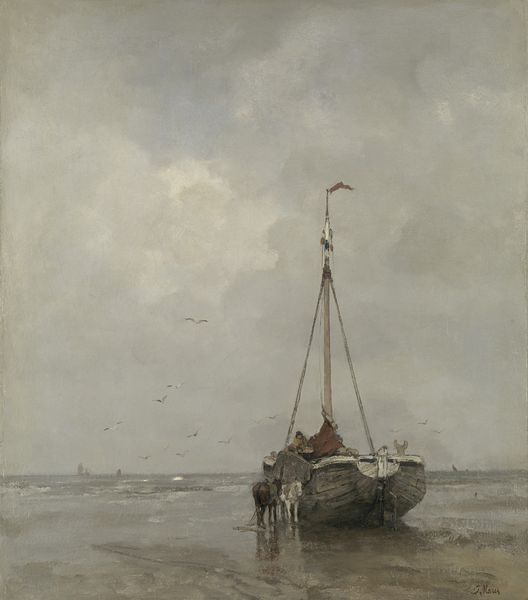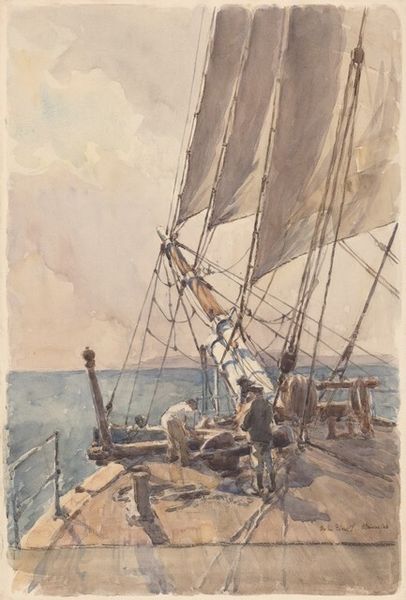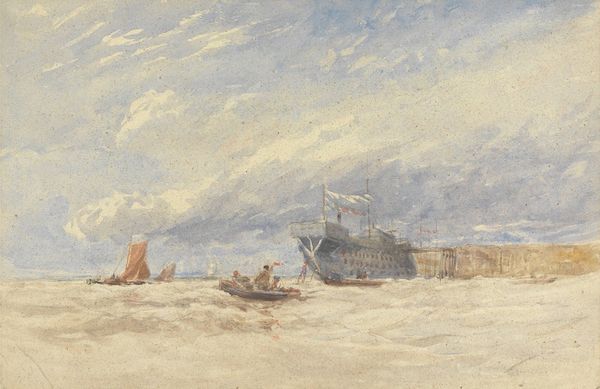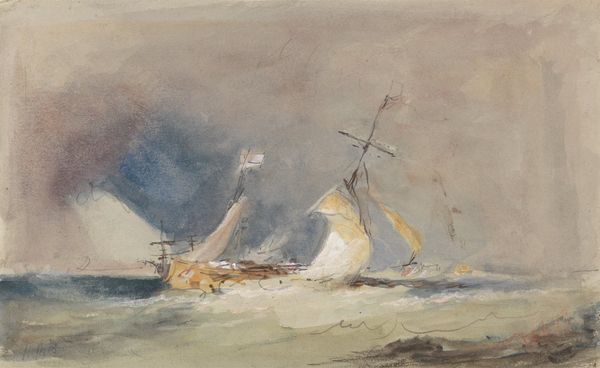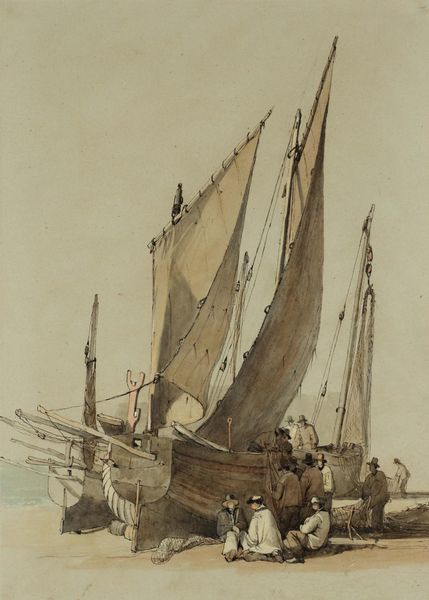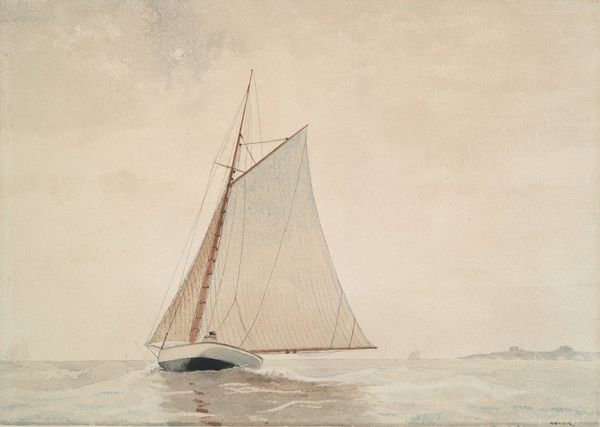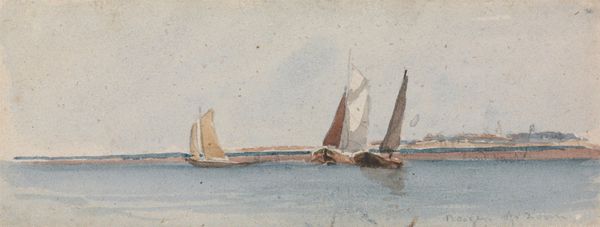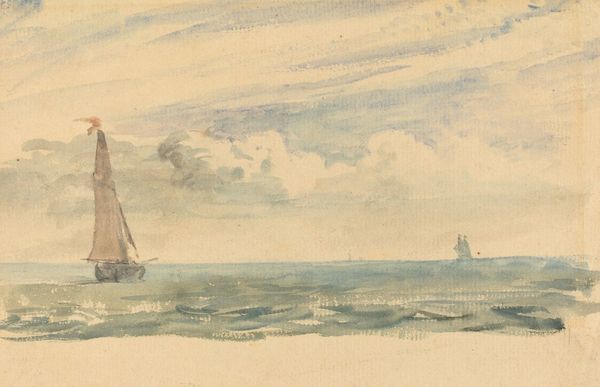
plein-air, watercolor
#
impressionism
#
plein-air
#
landscape
#
oil painting
#
watercolor
#
watercolor
#
realism
Dimensions: height 385 mm, width 289 mm
Copyright: Rijks Museum: Open Domain
Editor: Here we have "Visserspink aan het strand," or "Fishing Pink on the Beach," painted between 1847 and 1899 by Jacob Maris. It’s currently housed in the Rijksmuseum. Looking at this watercolor, I immediately sense a somber, quiet mood. The muted colors and the vast, cloudy sky really contribute to that feeling. What do you see in this piece? Curator: Beyond the immediate atmosphere, I'm drawn to the symbols present. The fishing boat itself—consider its cultural weight. For centuries, it represented livelihood, risk, and the unpredictable nature of the sea. Maris painted during a period of immense industrial change. Does this image suggest a longing for simpler times, a connection to ancestral ways of life fading with industrial progress? Editor: That's interesting! It didn't occur to me that the boat could be symbolic of something lost. Curator: The clouds, too, are potent symbols. Note their heaviness, their near-suffocating presence. Are they indicative of a personal melancholy reflected in nature, or perhaps a premonition of broader societal storms? What is being obscured by these clouds? Editor: I see what you mean. They almost feel oppressive. Also, are those birds in the foreground? They seem so small compared to the boat and the sky. Curator: Precisely. Birds often symbolize freedom, the soul, a connection to the divine. Their diminutive size against such a powerful backdrop – what might that signify in terms of humanity’s place in the cosmos, our vulnerability? Maris uses familiar elements to pose larger questions about existence and belonging. Editor: I guess I was just looking at it as a pretty picture, but I can now see that there are so many layers of meaning to unpack! Curator: Exactly! Images aren't just reflections, they're encoded narratives carrying collective memories and anxieties across time. Editor: Thanks for opening my eyes to all the possible interpretations. It definitely gives me a deeper appreciation for Maris's work.
Comments
No comments
Be the first to comment and join the conversation on the ultimate creative platform.

